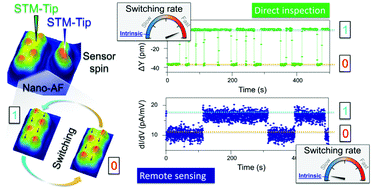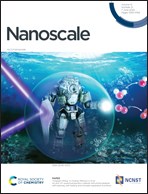Minimally invasive spin sensing with scanning tunneling microscopy†
Abstract
Minimizing the invasiveness of scanning tunneling measurements is paramount for observation of the magnetic properties of unperturbed atomic-scale objects. We show that the invasiveness of STM inspection on few-atom spin systems can be drastically reduced by means of a remote detection scheme, which makes use of a sensor spin weakly coupled to the sensed object. By comparing direct and remote measurements we identify the relevant perturbations caused by the local probe. For direct inspection we find that tunneling electrons strongly perturb the investigated object even for currents as low as 3 pA. Electrons injected into the sensor spin induce perturbations with much reduced probability. The sensing scheme uses standard differential conductance measurements, and is decoupled both by its non-local nature, and by dynamic decoupling due to the significantly different time scales at which the sensor and sensed object evolve. The latter makes it possible to effectively remove static interactions between the sensed object and the spin sensor while still allowing the spin sensing. In this way we achieve measurements with a reduction in perturbative effects of up to 100 times relative to direct scanning tunneling measurements, which enables minimally invasive measurements of a few-atom magnet's fragile spin states with STM.



 Please wait while we load your content...
Please wait while we load your content...